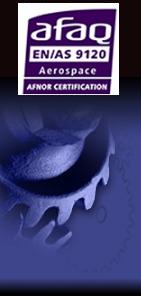If the bearing is stationary for extended periods or rotates slowly and/or intermittently and is subject to shock loads, then the selection is based upon this basic load rating. Values of basic load rating, Co, for each bearing are quoted in the bearing catalogs.
Dynamic Load Specification:
The dynamic load specification of a rotary bearing is dependent on both the dynamic and static forces acting upon the bearing. Therefore, please first calculate the Static Load Specification as outlined above. Axial and radial static forces multiplied by dynamic factors combine to form the equivalent dynamic bearing load, which is calculated as follows.
| Fdyn = Xdrad · Fsrad + Xdax · Fsax |
|
| Where |
Fdyn |
= Equivalent dynamic bearing load |
| Fsrad |
= Static radial load on bearing |
| Fsax |
= static axial load on bearing |
| Xdrad |
= radial dynamic factor (dimensionless) |
| Xdax |
= axial dynamic factor (dimensionless) |
When Fsax = 0 or is relatively small up to Fsax/Fdyn = e (The values of Fsrad, Fsax, and e are given in the rolling element bearing data) then
Fdyn = Fsrad
Since we have calculated the equivalent dynamic bearing load we can now compute the bearing dynamic load rating, which is used to select the bearing. Catalog dynamic load rating values should be chosen higher than the computed value for safety.
The catalog-listed dynamic load ratings are dependent upon both the equivalent dynamic load and the required bearing life. The ISO equation for the basic rating life is:

|
|
| Where |
L = |
basic rated life (millions of revolutions) |
| C = |
basic dynamic load rating |
| P = |
equivalent dynamic bearing load |
| m = |
exponent in the life equation,
m = 3 for ball bearings
m = 3.3 for other bearings. |
Basic Rated Life of Bearings:
The basic rated life is defined as the number of revolutions that ninety percent of a group of identical bearings would be expected to achieve. It is determined via the life required of the bearing. Typical life requirements for various machine categories are listed below.
| Machine Usage Type |
Life Required of Bearings (Hours) |
| household appliances — intermittent use |
300 - 3000 |
| hand tools, construction equipment — short period use |
3000 - 8000 |
| lifts, cranes — high reliability for short periods |
8000 - 12000 |
| 8h/day gears, motors — full day partial use |
10000 - 25000 |
| 8h/day machine tools, fans — full day full use |
20000 - 30000 |
| continuous use |
40000 - 50000 |








